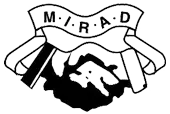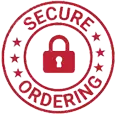Modders In the Firing Line Understanding the DVLAs Rules on Vehicle Modifications
Reg Plates ArticleModders In the Firing Line Understanding the DVLAs Rules on Vehicle Modifications

There's a common misconception that once you buy a car, it's yours to tinker with as you please. But in the UK, the Driver and Vehicle Licensing Agency (DVLA) has regulations in place to ensure all vehicles on the road are safe and meet specific standards. While these rules might seem strict at first glance, they play a vital role in keeping everyone safe.
This article dives deeper into a particular regulation that has recently come to light: the DVLA's authority to take vehicles off the road and request inspections for certain modifications. We'll explore what this means for drivers who like to customize their cars, the reasoning behind the rule, and how to stay compliant.
Why Does the DVLA Care About Modifications?
The DVLA's primary concern is road safety. Any modification to a vehicle, no matter how minor it seems, has the potential to alter its performance and handling characteristics. Unreported or poorly executed modifications can pose a serious threat, not just to the driver but also to passengers and other road users. Here are some specific dangers to consider:
Compromised structural integrity: Modifications to the chassis or bodywork can weaken the vehicle's frame, increasing the risk of collapse in an accident.
Altered handling: Changes to suspension, wheels, or tires can affect the car's stability and handling, making it more prone to rollovers or swerving.
Reduced braking efficiency: Modifications to the brakes can significantly impact stopping distances, potentially causing accidents.
Excessive noise or emissions: Unregulated modifications to the exhaust system can lead to noise pollution and exceed emission limits, harming the environment.
Obscured visibility: Non-standard alterations to headlights, taillights, or window tinting can hinder the driver's vision and that of other drivers on the road.
By ensuring all modifications are reported and meet safety standards, the DVLA aims to minimize these risks and keep our roads safe.
What Modifications Need to be Reported?
Not every customization requires informing the DVLA. Here's a breakdown of the types of modifications that fall under their regulations:
Chassis or bodywork: Any significant changes to the car's frame or structure, including roll cages, suspension modifications, or extensive body kits.
Exhaust system: Replacements or alterations to the exhaust that deviate from the original specifications.
Wheels and tires: Fitting wheels or tires with a different size, diameter, or load rating than what the vehicle was designed for.
Colour change: A complete or significant change to the car's body colour (excluding minor decals or stickers).
Engine modifications: Performance upgrades that alter the engine's power output or emissions.
Number plates: Any changes to the size, style, or positioning of the number plates that deviate from legal requirements.
If you're unsure whether a particular modification needs to be reported, it's always best to err on the side of caution and check with the DVLA. Their website offers a vehicle modification checker tool to help you determine if your changes require notification https://www.gov.uk/get-vehicle-information-from-dvla.
What Happens After Reporting a Modification?
Once you've informed the DVLA about a modification, they will typically update your vehicle registration certificate (V5C) to reflect the changes. In some cases, they might request further information or evidence to verify the modification meets safety standards. This could involve:
Providing receipts or certificates: Proof of purchase and installation from a reputable garage or modifier.
Submitting engineer reports: In the case of extensive modifications, a qualified engineer might need to assess the work and provide a report confirming its safety.
There's also a chance the DVLA will request a physical inspection of your vehicle. This is usually done at an authorized testing centre (MOT) to ensure the modifications haven't compromised the car's roadworthiness.
The Power to Ban: When Can the DVLA Take Your Car Off the Road?
While the term "ban" might sound harsh, the DVLA's primary goal isn't to punish car enthusiasts. Their power to take a vehicle off the road is reserved for situations where a modification poses a clear safety risk. This could include:
Unapproved modifications: Changes that haven't been reported or haven't received DVLA approval.
Poor-quality workmanship: Modifications that have been carried out by unqualified individuals, leading to structural weaknesses or malfunctions.
Failing an inspection: If a vehicle fails a DVLA-mandated inspection due to safety concerns related to the modifications.
In such cases, the DVLA will issue a Statutory Off-Road Notification (SORN), essentially prohibiting the car from being driven on public roads until the necessary corrective
It all started back in 1991 when our love and obsession for private number plates was born.
Since then we have grown steadily over the years to become a leading light in the private number plate industry holding our own stock of high quality number plates and many thousands of registrations we are selling for trade and private clients including many celebrities and sports personalities.


- FREE TRANSFER SERVICE - your paperwork is handled by our trained team
- OVER 30 YEARS EXPERTISE - long established and trusted company
- DVLA RECOGNISED RESELLER - linked directly from the DVLA website
- TRADE ASSOCIATION MEMBERS - MIRAD and CN Guild members


